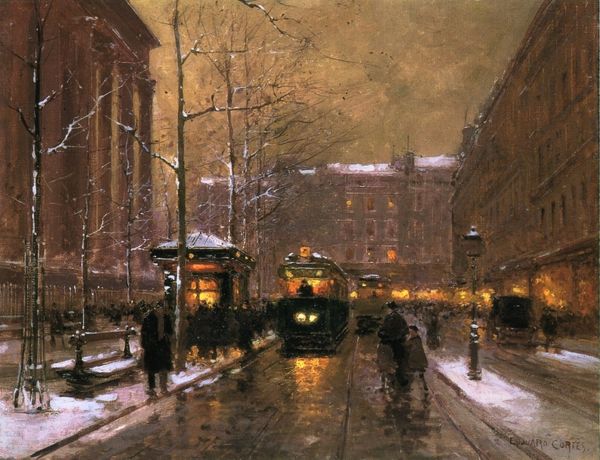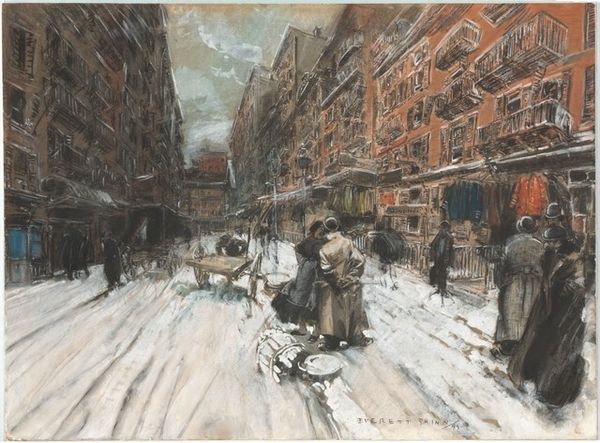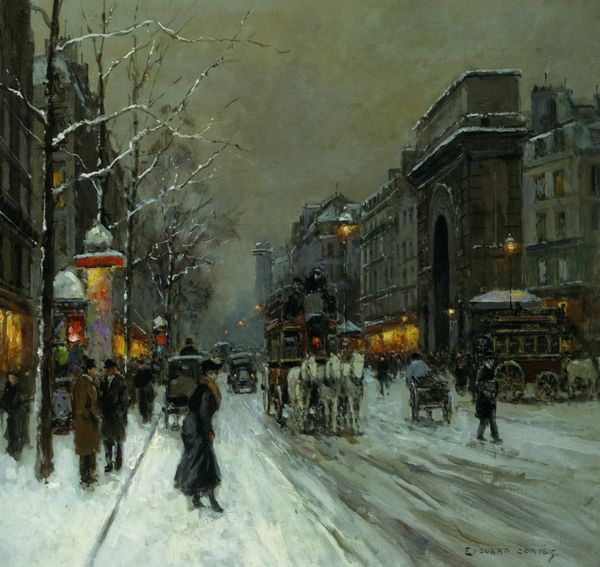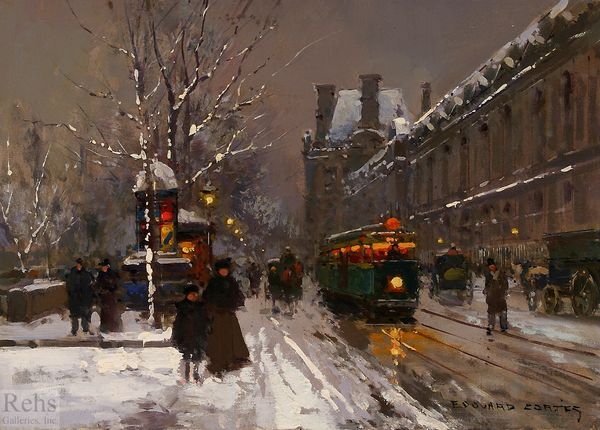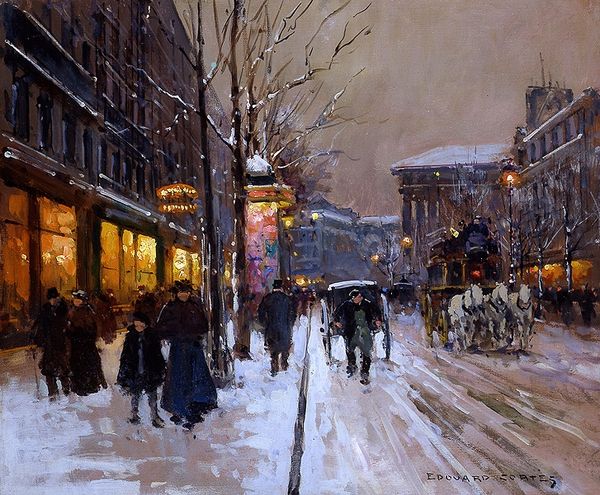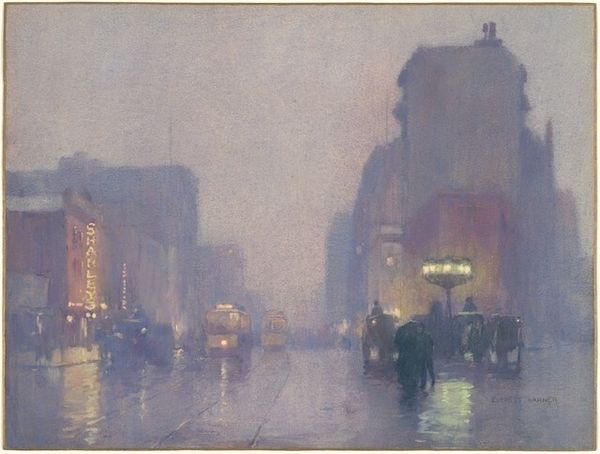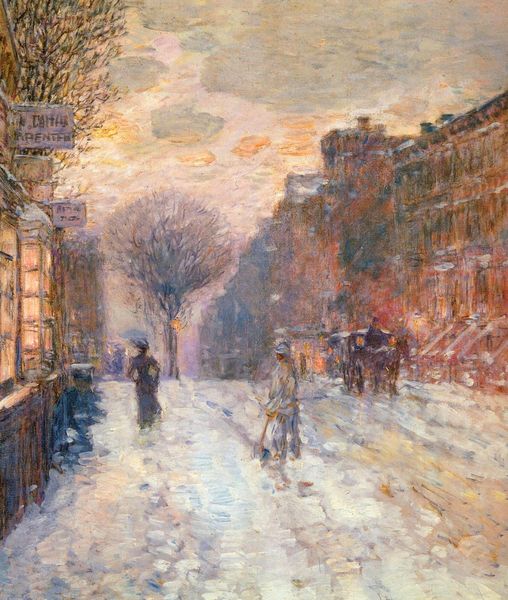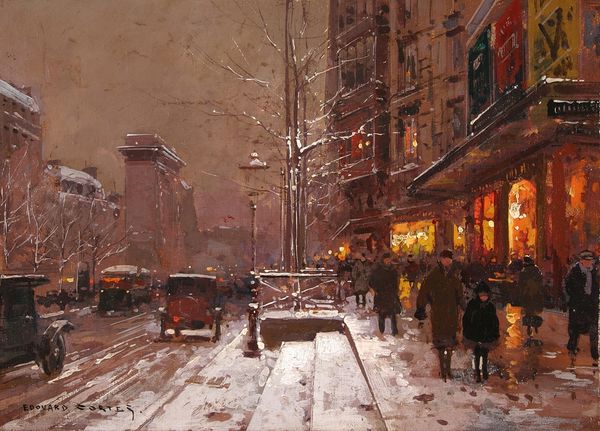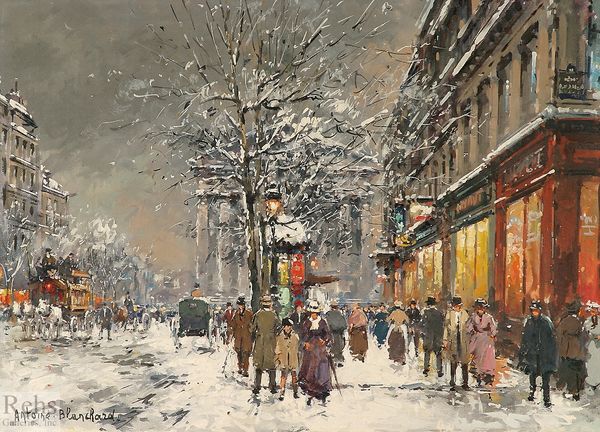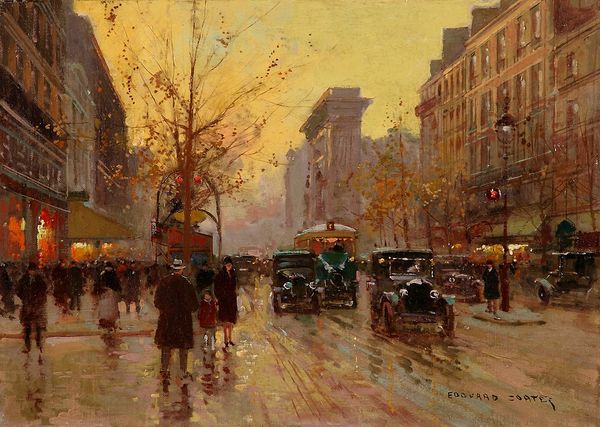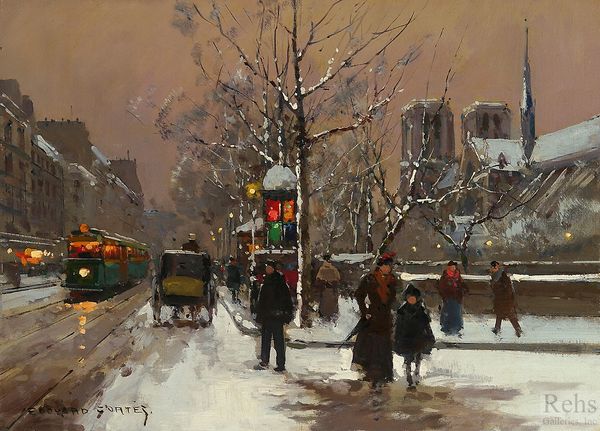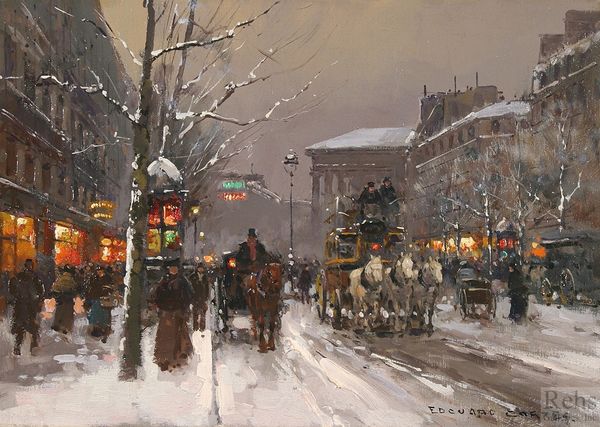
Copyright: Public Domain: Artvee
Editor: Here we have Robert Henri's "Snow in New York," painted in 1902 using oil. The subdued colors give the scene a rather somber mood, but there's also a sense of everyday life continuing despite the weather. What strikes you about this piece? Curator: What grabs me is how Henri uses this seemingly simple cityscape to reflect the lived experience of turn-of-the-century urbanites. Think about it – what does snow *mean* in 1902 New York? It isn't just picturesque. It's about class, access, labor, and visibility. Who had the luxury to pause and enjoy the snow? Who was out shoveling it, struggling to navigate it, or even profiting from it? Consider the horse-drawn carriages - who do you think is riding in them and who is trudging through the slush? Editor: That's a side I hadn't really considered. I was mostly focused on the painterly style and how it captures the feeling of a snowy day. Curator: Exactly, but the painterly style *serves* this social commentary. The blurring of figures makes them almost anonymous, part of the collective urban experience. The darkness of their garments and labor makes their silhouettes more invisible than those in charge. It's a pre-war world rapidly modernizing but still starkly divided along class lines, issues of which continue to manifest in modern-day metropolitan cities. Does seeing the painting this way shift your understanding? Editor: Definitely. It makes me see how even an everyday scene like this can be a powerful reflection on society and power. It is interesting how art becomes a conduit for these intersectional realities, blurring boundaries and amplifying voices in unique and complex ways. Curator: It also challenges us to look at our own urban landscapes critically: who is visible, who is not, and why? Editor: Precisely. I am curious what other perspectives this art is relevant to, it will be an interesting study.
Comments
No comments
Be the first to comment and join the conversation on the ultimate creative platform.
